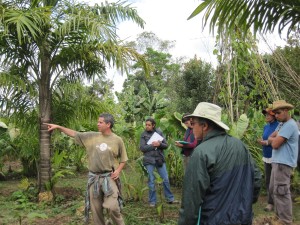Overstory #250 - Trees and diversity for promotion of agroecological functions
 Traditional Yapese farming system with a diversity of annual and tree crops
Traditional Yapese farming system with a diversity of annual and tree cropsIntroduction
It has been estimated that approximately 1.2 billion farmers practise agroforestry, while about 1.5 billion people (over 20% of the world’s population) use agroforestry products. From my travels seeing a wide range of different agroforestry systems, I realized that agroforestry is more than just an agronomic practice that restores soil fertility and produces tree products in farmers’ fields. It is also applied ecology or, more accurately, applied agroecology – the ecology of farming systems. This means, therefore, that it could be expected to also deliver ecological functions over and above such environmental services as erosion control, water infiltration, provision of shade, etc. that we saw in the last chapter. Environmental services are basically physical processes, while ecological functions have to do with the biological processes that make ecosystems dynamic and that regulate the balance between different organisms. This ecological balancing act is all about regulating the interactions between organisms throughout their life cycles and along their food chains. So, this process is an altogether higher order of magnitude in the way life self-regulates and creates a balance between species. It is this balance that confers ecological sustainability in different types of vegetation, landscapes or land uses.





